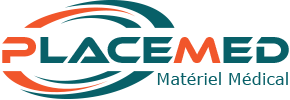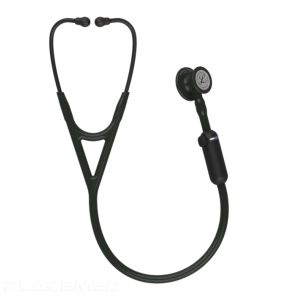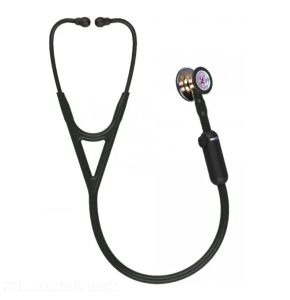Electronic stethoscope
GG106911
Electronic Stethoscope: A True Revolution
Electronic stethoscopes are transforming the way healthcare professionals examine their patients. With sound amplification and noise reduction, these electronic stethoscopes offer clearer and more precise listening than traditional models. But how do they work exactly, and what are their advantages? In this article, we explore the technologies behind electronic stethoscopes and how they improve medical practice.
How Does an Electronic Stethoscope Work?
An electronic stethoscope uses sensors to convert sound waves into electronic signals. These signals are then amplified, allowing weak or hard-to-detect sounds to be heard more easily compared to a traditional stethoscope. Active ambient noise cancellation eliminates unwanted noise, further enhancing sound quality. Some models, like the 3M Littmann digital stethoscope, feature a dual-frequency diaphragm to capture both low and high-frequency sounds. Ergonomic ear tips ensure optimal comfort during extended examinations.
Advantages Over Traditional Stethoscopes
Electronic stethoscopes offer numerous benefits. Sound amplification enables better listening to heart and lung sounds, helping detect anomalies earlier. A connected stethoscope can pair with iOS and Android devices, allowing 15, 30, 60, or 120-second recordings to be saved and annotated in a secure dashboard. This facilitates building a library of heart sounds for disease tracking or educational purposes. Professionals can securely share recordings with colleagues, improving collaboration.
Criteria for Choosing an Electronic Stethoscope
When purchasing an electronic stethoscope, several criteria are important. Battery life should be sufficient for daily use. Features like amplification, noise cancellation, and connectivity should match your needs. Ensure the connected stethoscope is compatible with the software you use, such as the 3M Littmann Core digital stethoscope connected to the Eko software. A dual-frequency diaphragm and the ability to examine both adult and pediatric patients are also key considerations.
Integration into Telemedicine
Connected stethoscopes play a key role in telemedicine. They allow remote data sharing, facilitating virtual consultations. Healthcare professionals can record heart or lung sounds and send them to specialists for further analysis. This improves access to care, especially for patients living far from medical centers. The ability to build a library of heart sounds also helps track patients' progress over time.
Usage Guide: Maximizing Performance
To get the most out of your electronic stethoscope, here are some practical tips. Familiarize yourself with different modes, such as analog and amplified, to choose the one that best fits each situation. Use active noise cancellation to improve sound quality in noisy environments. Ensure your electronic stethoscope is fully charged before each use to avoid interruptions. Finally, regularly clean the ear tips and diaphragm to maintain optimal hygiene.
Comparison of Leading Electronic Models
Several models of electronic stethoscopes are available on the market. The 3M Littmann Core digital stethoscope is highly regarded for its sound quality and connectivity. It offers amplification up to 40 times and connects to the Eko software for recording and analyzing sounds. The 3M Littmann electronic stethoscope also features active ambient noise cancellation. Each model has its strengths and weaknesses, so it's important to compare options to find the one that best suits your needs.
Challenges and Limitations
Despite their advantages, electronic stethoscopes have some challenges. The price can be a barrier for some, as they are generally more expensive than traditional models. The learning curve for mastering all the features can also be a drawback. Additionally, maintenance is more complex, requiring charging the device and updating the software. It's important to consider these factors before deciding to invest in a connected stethoscope.
 Francais
Francais 

